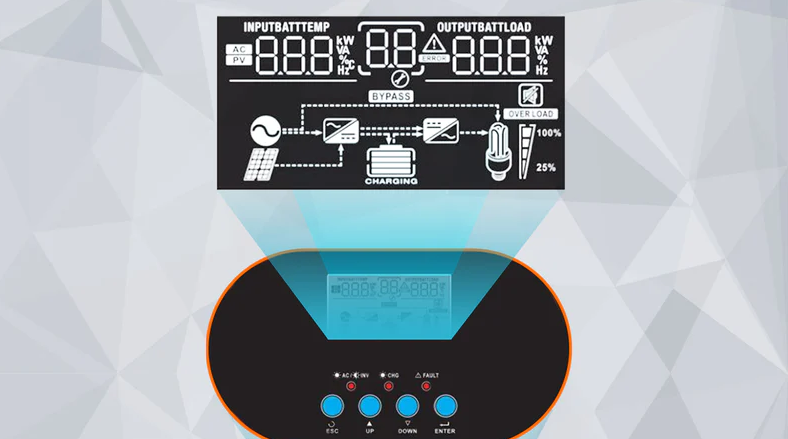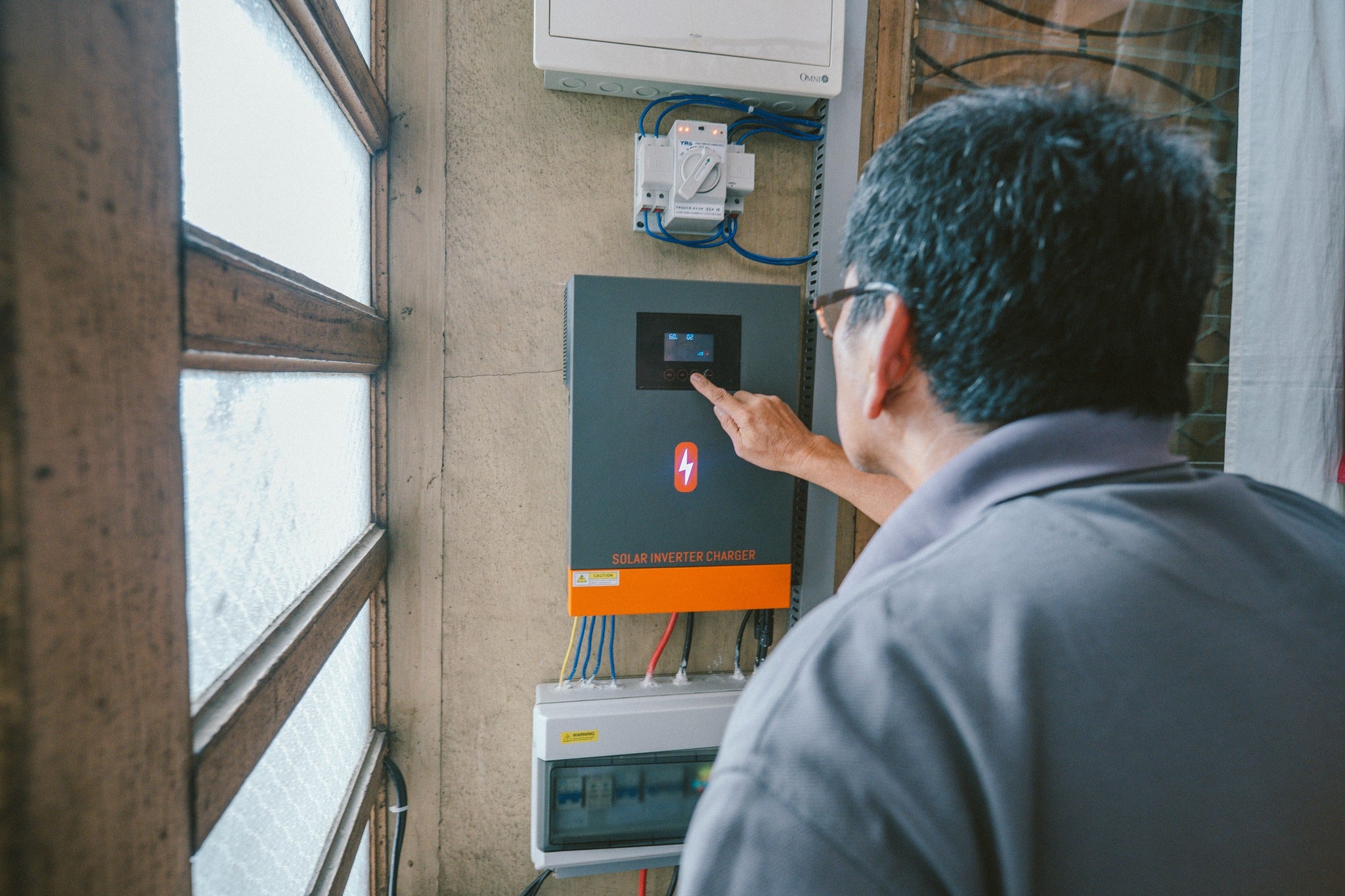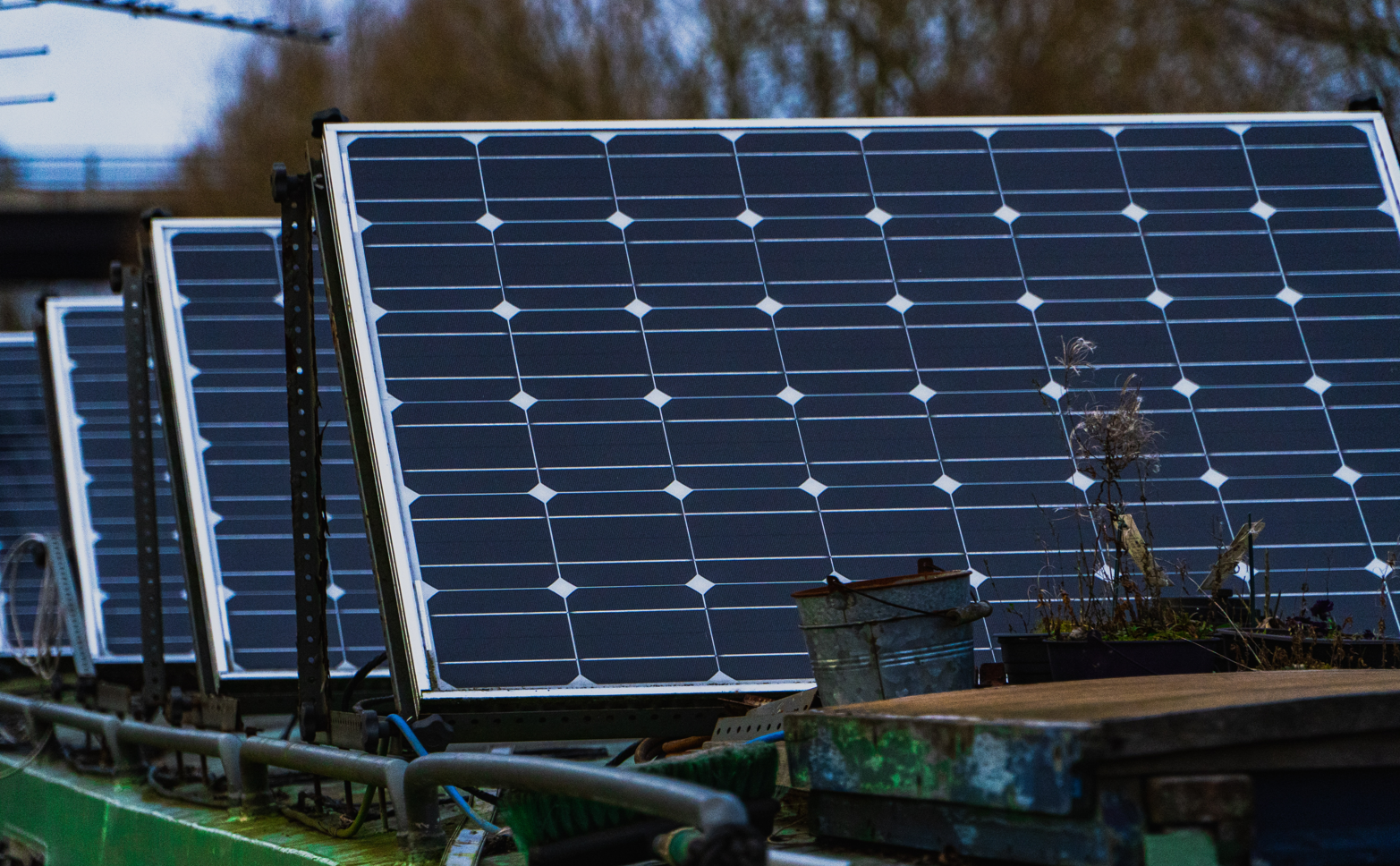When encountering an inverter malfunction, resetting the inverter is the most likely solution that users would think of. However, in reality, this is a broad troubleshooting method and there is no standardized procedure because the reset method may vary for different brands and models of inverters. Here, we mainly provide some general steps and considerations to keep in mind when resetting the inverter.
What does reset mean in inverter
In the context of an inverter, a reset refers to the process of restoring the inverter's settings or operation to a default or initial state. It is often used as a troubleshooting step to resolve issues or errors in the inverter's functioning.
There are generally two types of resets in inverters: soft reset and hard reset.
Method 1 - Soft Reset Inverter
A soft reset, also known as a software reset or a reboot, involves restarting the inverter's software or control system without affecting its hardware components.
Many advanced solar inverters now support soft reset, which means that the inverter can be reset by its own system configuration.
During a soft reset, the inverter's settings and configurations are retained, but the software and control systems are refreshed. Soft resets are commonly used for resolving minor software-related issues or glitches.
Steps to soft reset inverter
Here's how you can perform a soft reset:
-
Prioritize safety
Familiarize yourself with the manual and use protective gear. -
Disconnect AC/DC power
Switch off the main breaker for AC power and DC disconnect if applicable. -
Wait
Allow the inverter to discharge and reset for a few minutes. -
Reconnect power
Reset the breakers or switches to restore AC/DC power. -
Power on the inverter
Follow the manufacturer's instructions to turn it on. -
Observe
Monitor for error codes, warning lights, or abnormal behavior. -
Monitor performance
Keep an eye on the system to ensure optimal operation. -
Seek professional help if needed
Consult the manual or contact the manufacturer for assistance.
Method 2 - Hard Reset Inverter
A hard reset, also known as a factory reset or a system reset, involves restoring the inverter to its original factory settings, including both software and hardware configurations.
It erases all user-defined settings, data, and configurations stored in the inverter's memory, essentially returning it to its default state as if it were brand new.
Hard resets are typically performed when there are significant issues or malfunctions with the inverter, or when there is a need to wipe out all customizations and start fresh.
Steps to hard reset inverter
Here's how you can perform a hard reset:
-
Prioritize safety
Familiarize yourself with the manual and use protective gear. -
Disconnect AC/DC power
Switch off the main breaker for AC power and DC disconnect if applicable. -
Wait
Allow the inverter to discharge and reset for a few minutes. -
Reconnect power
Reset the breakers or switches to restore AC/DC power. -
Power on the inverter
Follow the manufacturer's instructions to turn it on. -
Observe
Monitor for error codes, warning lights, or abnormal behavior. -
Monitor performance
Keep an eye on the system to ensure optimal operation. -
Seek professional help if needed
Consult the manual or contact the manufacturer for assistance.
After performing a hard reset, the inverter will be restored to its factory defaults. You will need to reconfigure any custom settings, such as output voltage or frequency, if necessary. Keep in mind that a hard reset should be done with caution, as it erases all user settings and data.
Please note that the specific steps for performing soft resets and hard resets may vary depending on the manufacturer and model of the inverter.
It is always recommended to consult the inverter's user manual or contact the manufacturer's customer support for detailed instructions on how to perform a reset specific to your device.
FAQs on Resetting Inverter
Does the inverter have a reset button?
Yes, generally inverters have reset buttons. Typically, the ON/OFF button allows users to reset or restart the inverter. However, it's important to note that the presence and functionality of a reset button may vary depending on the manufacturer and model of the solar inverter.
Press and hold the ON/OFF button for 15 seconds, wait for the charging LED to flash quickly, and it's time to reset the inverter. Power inverters can have various functions, including buttons that allow users to reset them if they experience power problems. If the inverter is not properly reset after use, it may continue to power the equipment even if it is not actually needed, possibly resulting in serious injury or even death. Therefore, the power inverter should always be properly reset after use to avoid any safety hazard.
How long does it take for an inverter to reset?
The time it takes for an inverter to reset can vary depending on factors such as the model, circuitry, and complexity of the reset process. Generally, the reset time is relatively short.
For a soft reset, which involves a simple power cycle, it usually takes seconds. After turning the inverter off, a short wait may be necessary before turning it back on to allow for residual charges to dissipate.
For a hard reset or factory reset, which restores default settings, the duration can vary. It may take longer as the inverter erases user-defined configurations and restores factory settings. The exact time depends on the reset procedure and the specific hardware and software involved.
To find accurate information about the reset time for a particular inverter model, consult the manufacturer's documentation, user manual, or contact their customer support for instructions and details.
Why my inverter not working?
It may be caused by the following reasons, including grid power failure, battery dead, inverter tripped, battery disconnected, battery terminals loose, battery low, battery discharged or battery terminals reversed, etc.
If the power inverter is likely to fail due to lack of power, then it's time to see if the grid is down, so the power inverter may not be able to draw power from the grid. If the power switch is defective, you must take it to a service center for repair. Of course there are also power inverters that can fail due to mechanical problems. Another possibility is that over time, the power inverter may begin to fail due to aging, wear or corrosion.
It can be frustrating when your power inverter stops working, be sure to visit a professional at custom center to fix the problem. By doing this, you will avoid potential safety hazards and potential damage to your home.
How do I test my inverter?
A inverter is a device that converts alternating current to direct current. The quality of a power inverter will depend on its ability to generate clean and reliable direct current. If you want to test the output quality of a power inverter, then you can use an ampere or power meter to measure the current flowing through it at any given time.
To test an inverter, first determine the type of AC power the inverter will supply. AC power can be 6V, 12V, 24V or 48V. Determine the wattage of an AC power source by multiplying the volts by the amps. For example, if the inverter is going to power a lamp that uses 100 watts of AC, it needs to be plugged into a power outlet that provides 1200 watts of AC. If it works normally, there is no problem with the inverter.



